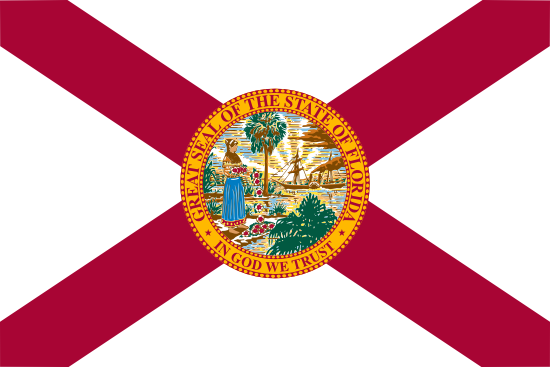
Florida
- Statehood Year:
- 1845
- Capital:
- Tallahassee
- Largest Cities:
- Jacksonville, Miami, Tampa
- Abbreviation:
- FL
Florida is a state in the Southeast region of the United States, known for the Everglades, white-sand beaches, and tropical keys. It has a population of 23,839,600, making it the 3rd most populated state in the country. The capital city is Tallahassee. Florida has a tourism-driven economy with aerospace and agricultural sectors.